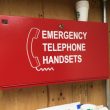Early adopters
Some of the best-known advances in M2M communications have come in the security and automotive industries. Security companies long have leveraged sensor technology in systems designed to detect intruders entering an enterprise or residence; the detection then triggers alerts to the security company that can lead to calls to law-enforcement authorities. Similar sensor technologies are used in a variety of vehicles—from large trucks to motorcycles—to provide data about the readiness of the vehicle to perform and upcoming maintenance that may be needed.
While initial sensors simply provided fuel-level information, today’s vehicles are equipped to provide insights on a variety of key systems and—in the case of an accident—provide details about the circumstances of the incident.
In the future, technology in both of these arenas is expected to become even more sophisticated, with security companies hoping to limit false alarms and the automotive industry implementing crash-avoidance systems that potentially could save untold numbers of lives.
And these sectors are just the tip of iceberg, as the impact of M2M communications is expected to permeate virtually every industry. One of the most promising sectors for such technology is healthcare, which has long used myriad monitors to assess the health of patients in hospital and doctors’ offices.
But what happens to the patient outside of medical facilities is a question that has perplexed healthcare officials for centuries. Doctors’ instructions can be misinterpreted, forgotten or ignored—and those instructions might evolve, as the patient’s condition changes over t time. Even when followed correctly, healthcare providers typically have only the patient’s word as “verification.”
Traditionally, this reality has resulted in patients having to make numerous trips to a healthcare provider, even when there is no indication that any health problem exists. However, by using M2M communications to link home monitoring gear such as blood-pressure devices and glucose meters to healthcare systems, readings can be shared automatically and caregivers can be alerted to potential health concerns immediately, according to Michael Holt, CEO and founder of Connected Health.
“Simply put, you stand on your scale, you take your blood-pressure reading, whatever, and without you doing anything, that data shows up at your healthcare providers—securely, with privacy, FDA-compliant and scalably, in a way that’s transparent to you,” Holt said. “Deviations are flagged. If the measurement is too high or too low, it is flagged in a dashboard, and a nurse knows who to call. The nurse basically calls people who have alarms and says, ‘Hey, I see your blood pressure is too high. Tell me about that.’
“So, they can get involved in managing this issue quickly and in a way that both improves the outcome for the patient—it is quick and responsive—and also reduces the cost. Because it may be that, in that discussion, you see a cause that needs to be monitored but is not serious enough to go to the hospital.”
Such decisions can be critical to both the patient and the hospital, Holt said. Patients do not want the cost and inconvenience associated with unnecessary trips to a healthcare provider, and hospitals also have time and financial pressures, particularly with new laws in the U.S. that effectively penalize healthcare facilities when patients are readmitted, he said.
“It may seem a little strange, but based on the way U.S. healthcare works, the hospital doesn’t want you to come in needlessly,” Holt said. “They don’t want you to go to the emergency room unless you need to go to the emergency room. Plus, you don’t want to go to the hospital needlessly, because it wastes your time and [money].”
If connectivity is available, such M2M technology is especially useful in rural areas, where patients may not have a healthcare facility in close proximity. In Australia, this sort of monitoring is used to keep tabs on patients in remote locations, so nurses can make better use of their time when making their weekly visits to the areas, Holt said.
“Now, they have the data in between [checkups] and it’s just a lot more efficient for them, and it’s a lot more efficient for the patients,” he said. “But even where there’s not a rural issue, it just makes it more efficient—everybody’s got the data, and the result is that healthcare is managed more cost effectively and with greater impact than if peoplejust have to randomly go to the hospitalif they’re concerned and don’tknow [whether they should].”













